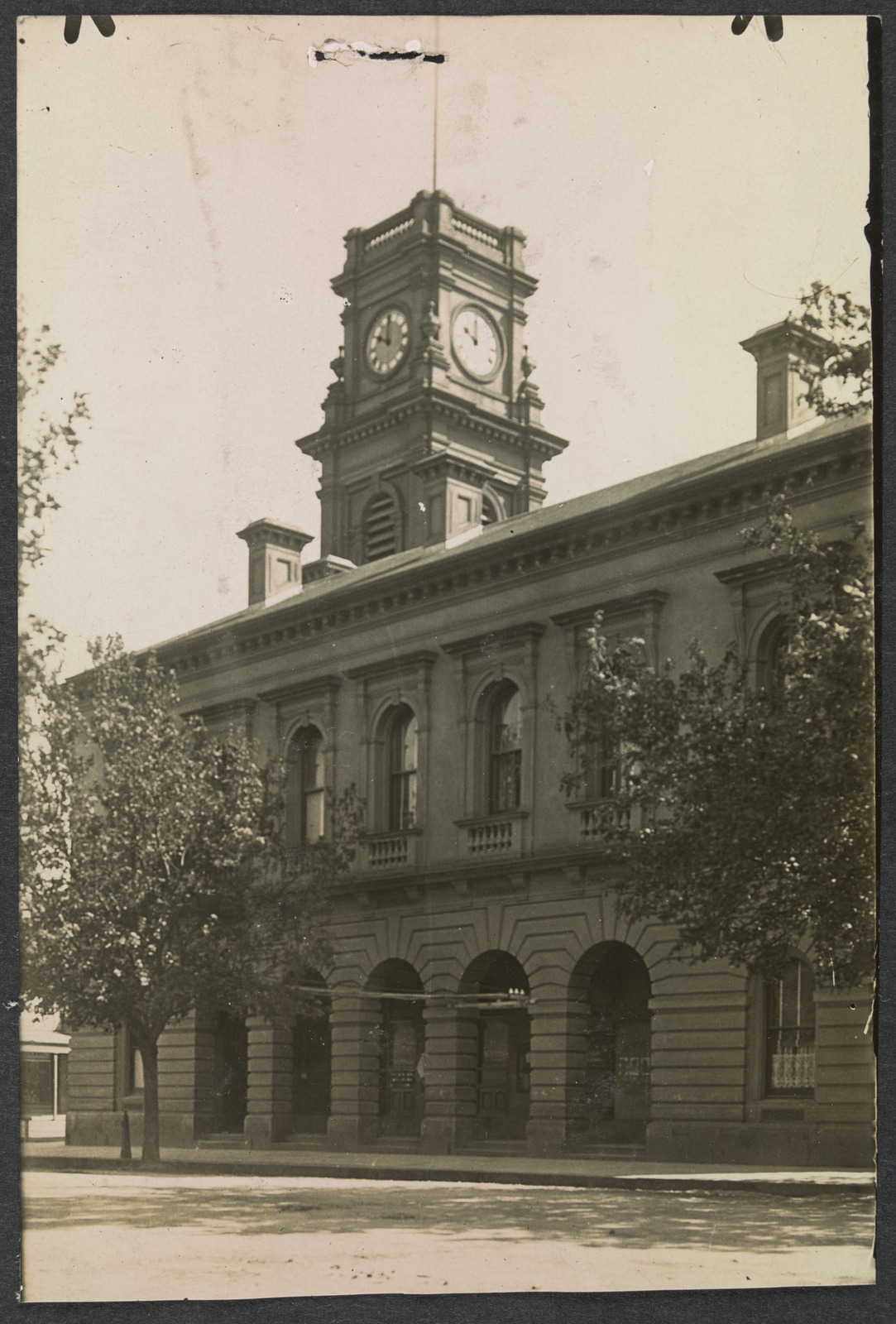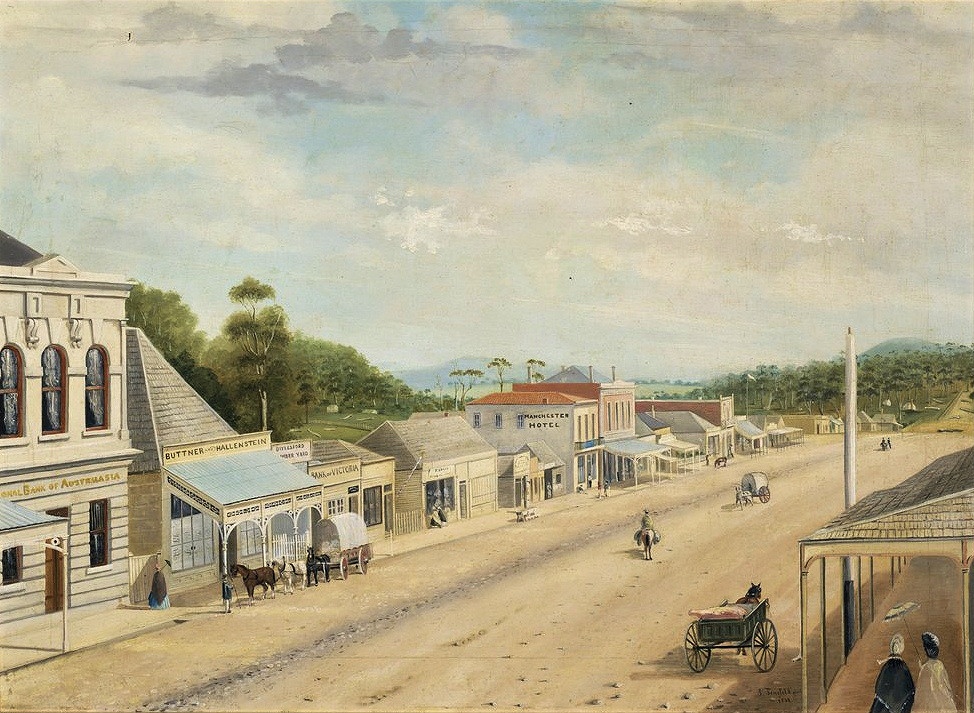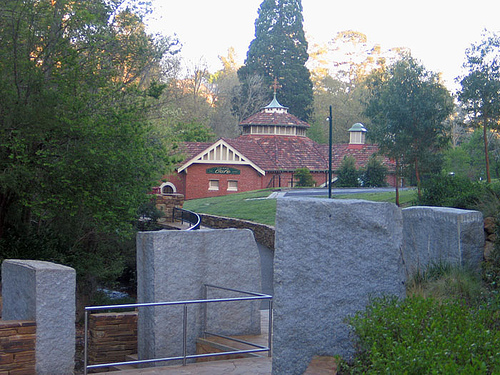|
Victor Zelman
Victor Zelman (1877–1960) was an Australian painter and etching, etcher. He was born in Melbourne and was the son of Alberto Zelman (senior) and the brother of Alberto Zelman, the founder of the Melbourne Symphony Orchestra. Life and career Zellman was born into a musical family, both his father and his elder brother were noted musicians. He grew up in Carlton and attended King's College in Fitzroy, Victoria, Fitzroy. Victor mastered the viola and violin and performed in chamber orchestras as a young man. He trained at the National Gallery of Victoria Art School in Melbourne. After finishing his training, Zelman exhibited with other groups of traditional artists in the general exhibitions organised by the various artists' societies in Melbourne including The Victorian Artists’ Society, The Melbourne Artists’ Society, The Fine Art Society, The Painters and Etchers’ Society, and The New Gallery and submitted work in various municipal art competitions and exhibitions. In ... [...More Info...] [...Related Items...] OR: [Wikipedia] [Google] [Baidu] |
Etching
Etching is traditionally the process of using strong acid or mordant to cut into the unprotected parts of a metal surface to create a design in intaglio (incised) in the metal. In modern manufacturing, other chemicals may be used on other types of material. As a method of printmaking, it is, along with engraving, the most important technique for old master prints, and remains in wide use today. In a number of modern variants such as microfabrication etching and photochemical milling it is a crucial technique in much modern technology, including circuit boards. In traditional pure etching, a metal plate (usually of copper, zinc or steel) is covered with a waxy ground which is resistant to acid. The artist then scratches off the ground with a pointed etching needle where the artist wants a line to appear in the finished piece, exposing the bare metal. The échoppe, a tool with a slanted oval section, is also used for "swelling" lines. The plate is then dipped in a bath of aci ... [...More Info...] [...Related Items...] OR: [Wikipedia] [Google] [Baidu] |
Diamond Creek
Diamond Creek is a suburb of Melbourne, Victoria, Australia, 23 km north-east of Melbourne's Central Business District, located within the Shire of Nillumbik local government area. Diamond Creek recorded a population of 12,503 at the 2021 census. History There are two ideas about where Diamond Creek got its name. Victoria's Register of Geographic Names says that it was because of the way the stones glistened in the creek water. Local legend says it is because of a bull who was trying to cross a creek. The bull had a diamond shaped white patch on its head and found difficulty crossing the creek. Thus the Bullocky named the town after the bull with the diamond shape on its head and the creek it drowned in. The Ellis family were pioneers of the District and benefactors of the Nillumbik cemetery gateway. Ellis Cottage, a rubble-stone hipped roof cottage contains its original fabric and is considered historically significant and is on the Victorian Heritage database. Gold ... [...More Info...] [...Related Items...] OR: [Wikipedia] [Google] [Baidu] |
National Library Of Australia
The National Library of Australia (NLA), formerly the Commonwealth National Library and Commonwealth Parliament Library, is the largest reference library in Australia, responsible under the terms of the ''National Library Act 1960'' for "maintaining and developing a national collection of library material, including a comprehensive collection of library material relating to Australia and the Australians, Australian people", thus functioning as a national library. It is located in Parkes, Australian Capital Territory, Parkes, Canberra, Australian Capital Territory, ACT. Created in 1960 by the ''National Library Act'', by the end of June 2019 its collection contained 7,717,579 items, with its manuscript material occupying of shelf space. The NLA also hosts and manages the renowned Trove cultural heritage discovery service, which includes access to the Australian Web Archive and National edeposit (NED), a large collection of digitisation, digitised newspapers, official documents, ... [...More Info...] [...Related Items...] OR: [Wikipedia] [Google] [Baidu] |
Castlemaine Art Museum
Castlemaine Art Museum is an Australian art gallery and museum in Castlemaine, Victoria in the Shire of Mount Alexander. It was founded in 1913. It is housed in a 1931 Art Deco neo-classical building constructed for the purpose, heritage-listed by the National Trust. Its collection concentrates on Australian art and the museum houses historical artefacts and displays drawn from the district. The Museum is governed by private trustees and managed by a board elected by subscribers and provided with state and local government funding and support from benefactors, local families, artists and patrons. It oversees the management of Buda, a heritage-listed villa and garden 1.3 km across Castlemaine in Hunter Street, which houses its own collection of art and artefacts associated with the Leviny family, and is also open to the public for exhibitions, events displays and garden tours. Collection The Collections may be searched onlin Museum collection The museum, housed in the basem ... [...More Info...] [...Related Items...] OR: [Wikipedia] [Google] [Baidu] |
Art Gallery Of New South Wales
The Art Gallery of New South Wales (AGNSW), founded as the New South Wales Academy of Art in 1872 and known as the National Art Gallery of New South Wales between 1883 and 1958, is located in The Domain, Sydney, Australia. It is the most important public gallery in Sydney and one of the largest in Australia. The gallery's first public exhibition opened in 1874. Admission is free to the general exhibition space, which displays Australian art (including Indigenous Australian art), European and Asian art. A dedicated Asian Gallery was opened in 2003. History 19th century On 24 April 1871, a public meeting was convened in Sydney to establish an Academy of Art "for the purpose of promoting the fine arts through lectures, art classes and regular exhibitions." Eliezer Levi Montefiore (brother of Jacob Levi Montefiore and nephew of Jacob and Joseph Barrow Montefiore) co-founded the New South Wales Academy of Art (also referred to as simply the Academy of Art)Published online 2014 an ... [...More Info...] [...Related Items...] OR: [Wikipedia] [Google] [Baidu] |
Aquatint
Aquatint is an intaglio printmaking technique, a variant of etching that produces areas of tone rather than lines. For this reason it has mostly been used in conjunction with etching, to give both lines and shaded tone. It has also been used historically to print in colour, both by printing with multiple plates in different colours, and by making monochrome prints that were then hand-coloured with watercolour. It has been in regular use since the later 18th century, and was most widely used between about 1770 and 1830, when it was used both for artistic prints and decorative ones. After about 1830 it lost ground to lithography and other techniques. There have been periodic revivals among artists since then. An aquatint plate wears out relatively quickly, and is less easily reworked than other intaglio plates. Many of Goya's plates were reprinted too often posthumously, giving very poor impressions. Among the most famous prints using the aquatint technique are the major serie ... [...More Info...] [...Related Items...] OR: [Wikipedia] [Google] [Baidu] |
National Gallery Of Victoria
The National Gallery of Victoria, popularly known as the NGV, is an art museum in Melbourne, Victoria, Australia. Founded in 1861, it is Australia's oldest and most visited art museum. The NGV houses an encyclopedic art collection across two sites: NGV International, located on St Kilda Road in the Melbourne Arts Precinct of Southbank, and the Ian Potter Centre: NGV Australia, located nearby at Federation Square. The NGV International building, designed by Sir Roy Grounds, opened in 1968, and was redeveloped by Mario Bellini before reopening in 2003. It houses the gallery's international art collection and is on the Victorian Heritage Register. The Ian Potter Centre: NGV Australia, designed by Lab Architecture Studio, opened in 2002 and houses the gallery's Australian art collection. A third site, The Fox: NGV Contemporary, is planned to open in 2028, and will be Australia's largest contemporary gallery. History 19th century In 1850, the Port Phillip District of New S ... [...More Info...] [...Related Items...] OR: [Wikipedia] [Google] [Baidu] |
National Gallery Of Australia
The National Gallery of Australia (NGA), formerly the Australian National Gallery, is the national art museum of Australia as well as one of the largest art museums in Australia, holding more than 166,000 works of art. Located in Canberra in the Australian Capital Territory, it was established in 1967 by the Australian Government as a national public art museum. it is under the directorship of Nick Mitzevich. Establishment Prominent Australian artist Tom Roberts had lobbied various Australian prime ministers, starting with the first, Edmund Barton. Prime Minister Andrew Fisher accepted the idea in 1910, and the following year Parliament established a bipartisan committee of six political leaders—the ''Historic Memorials Committee''. The Committee decided that the government should collect portraits of Australian governors-general, parliamentary leaders and the principal "fathers" of federation to be painted by Australian artists. This led to the establishment of what bec ... [...More Info...] [...Related Items...] OR: [Wikipedia] [Google] [Baidu] |
Daylesford, Victoria
Daylesford is a spa town located in the foothills of the Great Dividing Range, within the Shire of Hepburn, Victoria (Australia), Victoria, Australia, approximately 108 kilometres north-west of Melbourne. First established in 1852 as a gold-mining town, today Daylesford has a population of 2,548 as of the 2016 Australian census, 2016 census. As one of Australia’s few spa towns, Daylesford is a notable tourist destination. The town’s numerous spas, restaurants and galleries are popular alongside the many gardens and country-house-conversion styled bed and breakfasts. The broader area around the town, including Hepburn Springs, Victoria, Hepburn Springs to the north, is known for its natural spring mineral spas and is the location of over 80 per cent of Australia's effervescent mineral water reserve. It is also the filming location for the third season of ''The Saddle Club'', and scenes from the 2004 film ''Love's Brother''. History Prior to European settlement the area was ... [...More Info...] [...Related Items...] OR: [Wikipedia] [Google] [Baidu] |
Hepburn Springs
The traditional land of the Dja Dja Wurrung, Hepburn Springs is a resort town located in the middle of the largest concentration of mineral springs in Australia, situated in Victoria, 48 km northeast of Ballarat. At the , Hepburn had a population of 599 and Hepburn Springs had a population of 329. Total population of Hepburn-Hepburn Springs was 928. The town is named after Captain John Hepburn who was an early squatter of central Victoria. Hepburn and Hepburn Springs are twin towns which are often badged together under the Hepburn Springs name. Hepburn Springs was originally known as "Spring Creek" and Hepburn as "Old Racecourse". Old Racecourse is the location of the recreation reserve and "new racecourse" is Victoria Park in nearby Daylesford. Both Hepburn and Hepburn Springs were located on the Jim Crow Diggings and the towns were settled by miners in the 1850s, predominantly from England, Ireland, Germany, Switzerland, Italy and France. The Hepburn Post Office opened ... [...More Info...] [...Related Items...] OR: [Wikipedia] [Google] [Baidu] |
Murray River
The Murray River (in South Australia: River Murray) (Ngarrindjeri: ''Millewa'', Yorta Yorta: ''Tongala'') is a river in Southeastern Australia. It is Australia's longest river at extent. Its tributaries include five of the next six longest rivers of Australia (the Murrumbidgee, Darling, Lachlan, Warrego and Paroo Rivers). Together with that of the Murray, the catchments of these rivers form the Murray–Darling basin, which covers about one-seventh the area of Australia. It is widely considered Australia's most important irrigated region. The Murray rises in the Australian Alps, draining the western side of Australia's highest mountains, then meanders northwest across Australia's inland plains, forming the border between the states of New South Wales and Victoria as it flows into South Australia. From an east–west direction it turns south at Morgan for its final , reaching the eastern edge of Lake Alexandrina, which fluctuates in salinity. The water then flows throu ... [...More Info...] [...Related Items...] OR: [Wikipedia] [Google] [Baidu] |
Goulburn
Goulburn ( ) is a regional city in the Southern Tablelands of the Australian state of New South Wales, approximately south-west of Sydney, and north-east of Canberra. It was proclaimed as Australia's first inland city through letters patent by Queen Victoria in 1863. Goulburn had a population of 23,835 at June 2018. Goulburn is the seat of Goulburn Mulwaree Council. Goulburn is a railhead on the Main Southern line, a service centre for the surrounding pastoral industry, and also stopover for those traveling on the Hume Highway. It has a central park and many historic buildings. It is also home to the monument the Big Merino, a sculpture that is the world's largest concrete-constructed sheep. History Goulburn was named by surveyor James Meehan after Henry Goulburn, Under-Secretary for War and the Colonies, and the name was ratified by Governor Lachlan Macquarie. The colonial government made land grants to free settlers such as Hamilton Hume in the Goulburn area from ... [...More Info...] [...Related Items...] OR: [Wikipedia] [Google] [Baidu] |








.jpg)